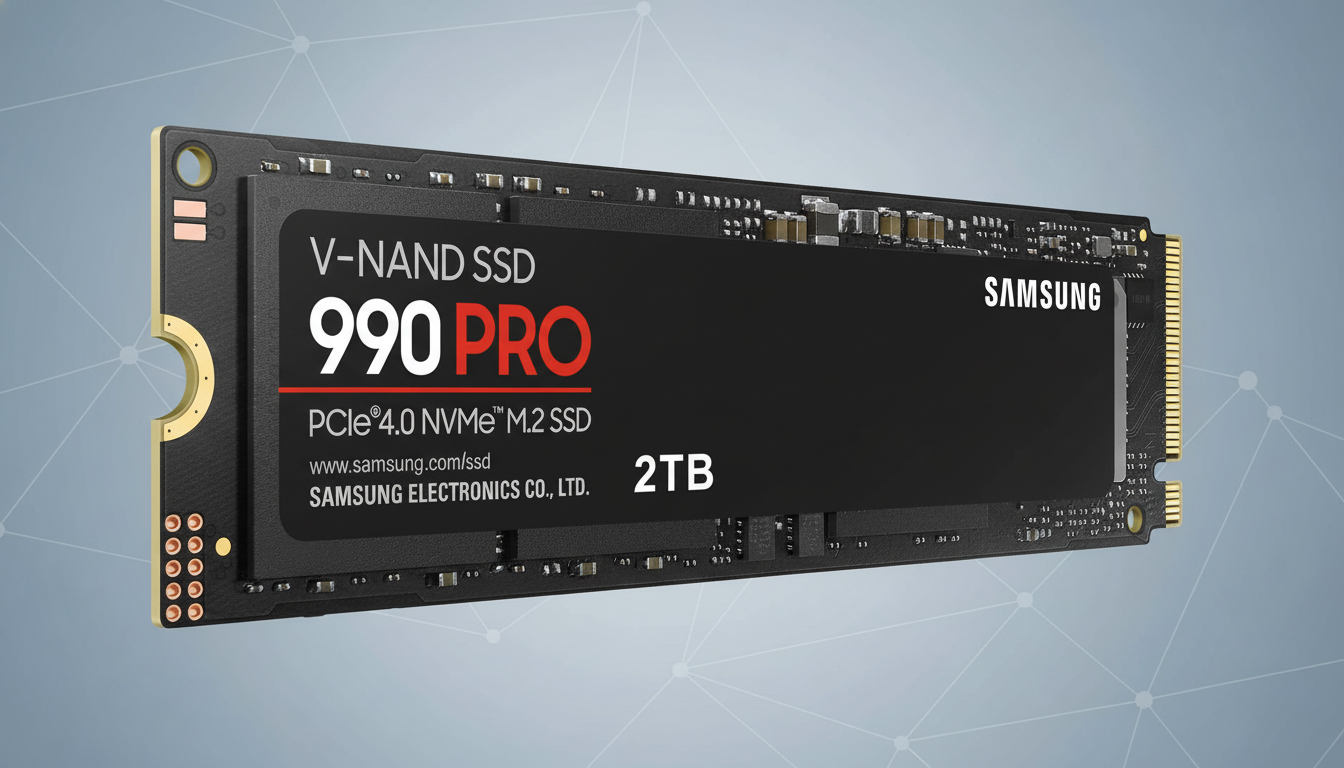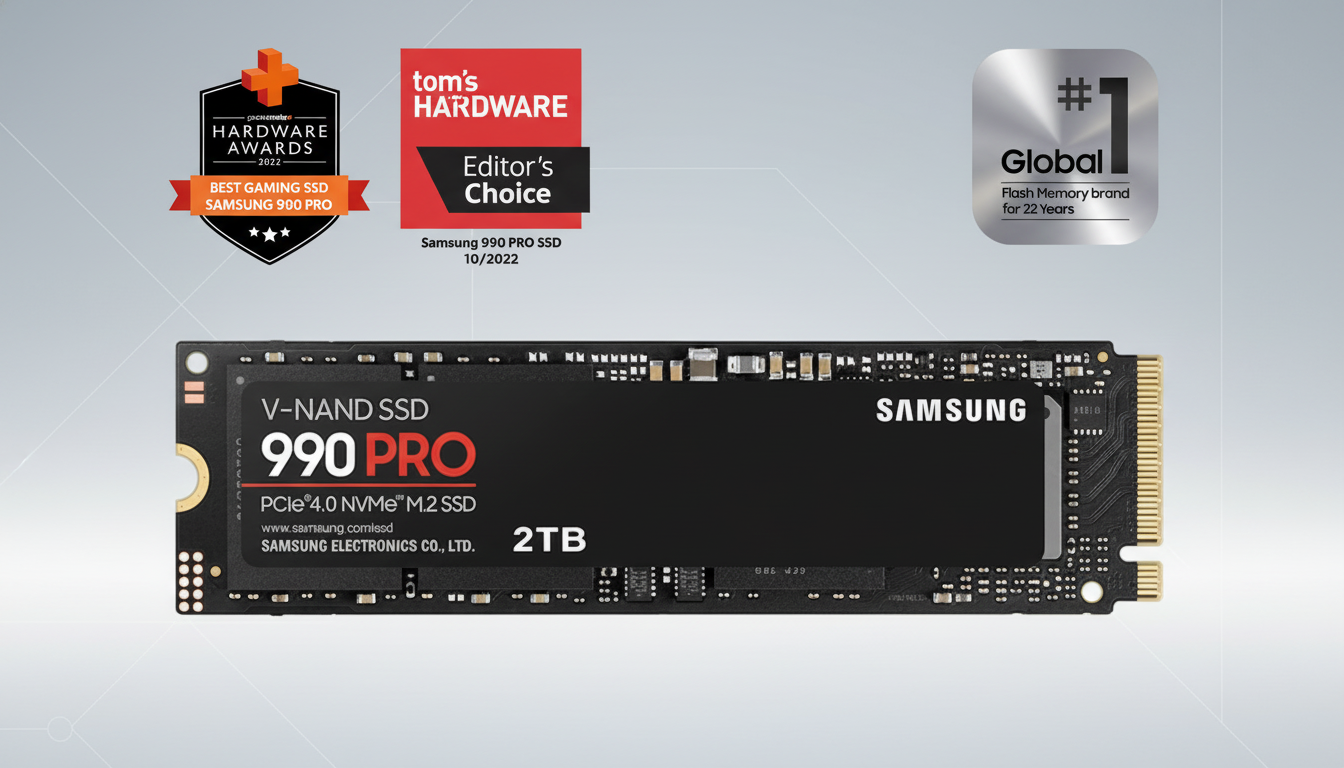If you’ve been holding out on expanding your storage without going broke, now’s the moment. Retailers are discounting internal NVMe and portable SSDs, as well as high-capacity external HDDs, to some of the lowest prices we’ve seen in a long time. The upshot: you can protect photos, speed up your PC, or park terabytes of game installs for significantly less than earlier in the year.
There is a supply story behind the discounts. TrendForce has followed fluctuating NAND pricing for the past year, and when chipmakers stabilize their output, retailers commonly entice consumers with promotions to help clear stock. Combine that with increasing game sizes and 4K video workflows, and you’ve got consumer demand meeting deal season head to head.

The Best SSD Deals And How To Find Them Today
Most desktops and laptops with an M.2 slot can use NVMe drives, and they remain the best performance upgrade per dollar you can make for a computer that supports them. The likes of the Samsung 990 Pro, WD Black SN850X, and Crucial T500 regularly get sequential reads close to 7,000MB/s over PCIe 4.0 and are great options for creators and gamers looking for fast level loads and scratch‑disk pace.
A budget NVMe pick like the SK hynix Gold P31 (PCIe 3.0), meanwhile, still feels speedy in general usage and can be a better buy if you’re upgrading an older system.
Look for drives that come with a DRAM cache and at least a 5‑year warranty — two easy tells you’re not giving up longevity for a smaller sticker.
Portable SSDs are also being discounted heavily. The SanDisk Extreme Portable V2 and Samsung T7 Shield often receive double‑digit percentage discounts, providing about 1,000MB/s over a USB 3.2 Gen 2 connection alongside rugged shells and hardware encryption for on‑the‑go backups. If your laptop does support USB 3.2 Gen 2×2, though, drives like the Crucial X10 Pro can hover around a peak of 2,000MB/s.
Big Capacity For Less With New HDD Specials
For bulk storage, like network file share backups, media libraries, or a Plex server, HDDs are still the way to go in terms of cost per terabyte. It’s not at the snail’s pace of Helium, but neither is it competing — deals often offer 12TB to 18TB capacities (drives commonly found in desktop externals designed to sit next to your machine), coupling huge storage volumes with bargain prices, and sustained transfers typically between 180MB/s and sometimes even beyond 250MB/s — large enough for nightly backups and archive work.
More expensive NAS‑grade drives, such as Seagate IronWolf and WD Red Plus, are pricier buy‑ups that feature vibration sensors — useful for 24/7 file servers where several disks are stacked close together — higher workload ratings, and longer warranties. Toshiba’s X300 and N300 lines also show up in deal bins and are worth a look for performance‑oriented high‑capacity HDD builds.

How To Tell A Real Bargain On Storage Deals
Price per terabyte is your North Star. For PCIe 4.0 NVMe: sub‑$60/TB is usually a hot deal on good brands; portable SSDs below about $70/TB are very strong; for 3.5‑inch desktop HDDs, when you can find them under about $18/TB, that’s a standout, with doorbusters occasionally flirting with $15/TB. These numbers are all regionally priced, but the thresholds help distinguish hype from value.
Look beyond speed claims. TBW, warranty duration, and whether the SSD uses DRAM matter for long‑term performance. Some things to consider: little touches like hardware encryption can add a layer of security, and IP ratings indicate the drive’s water and dust protection levels; also, check whether a recovery plan comes included — Seagate units include various limited‑time services that could be useful, after all.
Speed Numbers That Count For Real‑World Storage Use
PCIe 4.0 NVMe drives peak at around 7,000MB/s, but they benefit the most from faster random I/O and queue depth performance rather than headline sequential numbers alone. 4K/6K content creators with huge project files can still get the top‑tier sequentials; for everyone else, you’re fine shopping for a midrange model that has good mixed‑workload scores.
USB 3.2 Gen 2 portable SSDs float around 1,000MB/s, Gen 2×2 can near 2,000MB/s, and Thunderbolt 3/4 enclosures go beyond even that; you just need the right NVMe inside. SATA drives top around 560MB/s — fine for older machines or upgrading a console, but NVMe expands to more bandwidth for heavy multitasking and giant transfers.
Reliability And Backup Strategy For Your Data
All storage will fail eventually, so shop on sale — and back up anyway. Backblaze’s numbers have long tracked with what some of the best research papers suggest for average annualized HDD failure rates, i.e., in the low single digits — just a good reminder to follow the 3‑2‑1 rule when it comes to backups: three copies of your data, on two different media types, one off‑site. SSDs have no moving parts and frequently outlive the host PC, but they are not eternal.
If you’re carrying sensitive files, protect them with encryption in your OS or by selecting drives that offer built‑in AES support. For mission‑critical work, it’s mirrored pairs of drives (RAID 1) in a NAS and periodic versioned snapshots to protect against ransomware and accidental deletion.
Quick Picks To Watch For Storage Deal Hunters
- Samsung 990 Pro 1TB/2TB: Top‑tier PCIe 4.0 speeds and a 5‑year warranty; ideal for gaming rigs and creative suites.
- WD Black SN850X 1TB with Heatsink: Powerful Gen 4 performance and console‑friendly heat management, great for small PCs.
- Crucial T500 2TB: Fast and efficient, and often aggressively priced; a great middle ground for those upgrading.
- SanDisk Extreme Portable V2 2TB: Rugged, pocketable, and quick over USB‑C; a travel‑ready vault for photo and video.
- Samsung T7 Shield 2TB: A rubberized shell and hardware encryption make it a safe choice as a field drive.
- WD Elements Desktop 14TB–18TB: Great price‑per‑terabyte for backup and media storage.
- Seagate Expansion Desktop 16TB: Dependable bulk storage, with nice sustained throughput for your archives and Plex.
- Seagate IronWolf or WD Red Plus 8TB–12TB: NAS‑centric durability and 24/7 warranty for home servers.
The takeaway: Stack these discounts on top of store coupons or loyalty credits, concentrate on price per TB and warranty length, and you’ll secure fast, reliable storage for well below normal prices.

